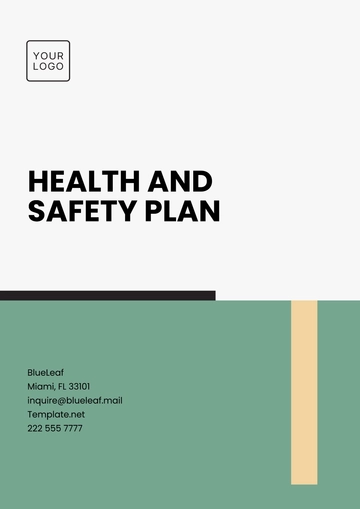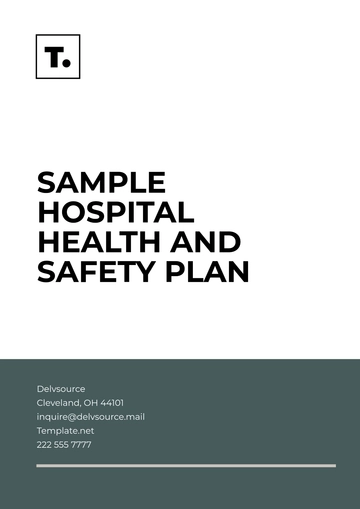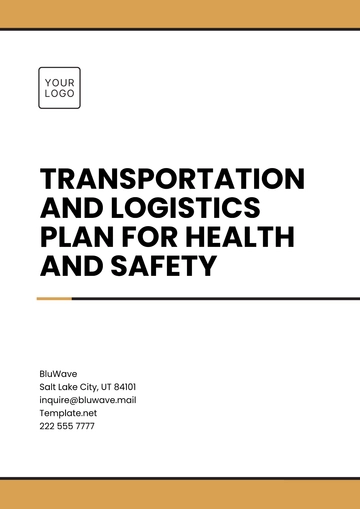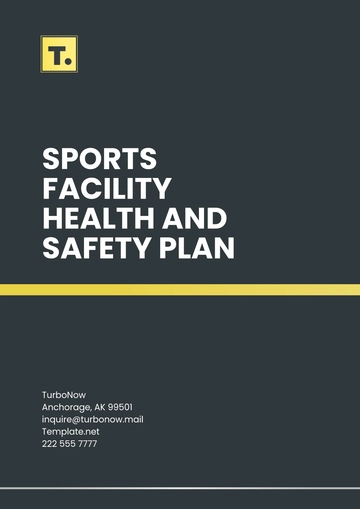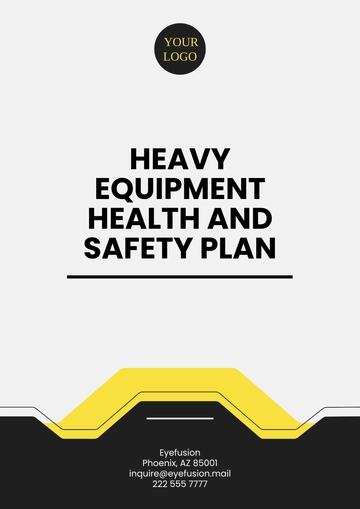Free PPE Compliance Monitoring Plan

A. Introduction
The PPE Compliance Monitoring Plan is an essential document designed to ensure the safety and well-being of our employees. It serves as a framework for systematically monitoring the correct usage of Personal Protective Equipment (PPE) in our workplace.
Compliance with PPE regulations is of paramount importance, and this plan reaffirms our commitment to adhere to OSHA (Occupational Safety and Health Administration) standards. By implementing this plan, we aim to safeguard the health and safety of our workforce while maintaining full compliance with applicable US laws and regulations.
B. Regulatory Framework
In the United States, the use of Personal Protective Equipment (PPE) is governed by a comprehensive set of federal and state regulations aimed at ensuring the safety and well-being of workers. The primary regulatory authority for PPE is the Occupational Safety and Health Administration (OSHA). OSHA standards, found in 29 CFR 1910.132 - 1910.138, outline specific requirements for the selection, use, and maintenance of PPE in the workplace.
These regulations mandate that employers must assess workplace hazards, select appropriate PPE, provide training to employees, and ensure the proper maintenance of PPE. Additionally, state-specific regulations may exist, and employers are obligated to comply with both federal and state standards, whichever is more stringent. Non-compliance with these regulations can result in penalties, fines, and, more importantly, increased risks to employee safety. Therefore, it is imperative that our company fully embraces and adheres to these regulations to maintain a safe working environment and uphold legal compliance.
C. Roles and Responsibilities
In order to establish a robust PPE compliance monitoring system, clear delineation of roles and responsibilities is imperative. The effective implementation of Personal Protective Equipment (PPE) protocols relies on the active participation of key personnel at various levels within the organization. The following table outlines the specific responsibilities of management, supervisors, safety officers, and employees, ensuring that everyone plays a crucial role in maintaining a safe and compliant workplace:
Position | Responsibilities |
Management | Establish and enforce PPE policies and procedures. |
Allocate necessary resources for PPE compliance. | |
Support and promote a culture of safety and compliance. | |
Supervisors | Ensure employees are trained in proper PPE usage. |
Monitor PPE usage and compliance within their teams. | |
Safety Officers | Conduct regular PPE inspections and assessments. |
Provide guidance on PPE selection and use. | |
Employees | Properly wear and maintain assigned PPE. |
Report any PPE issues or safety concerns promptly. | |
Participate in PPE training and follow guidelines. |
D. PPE Selection and Assessment
Selecting and assessing the appropriate Personal Protective Equipment (PPE) is a critical aspect of ensuring the safety and well-being of employees in the workplace. Our PPE Compliance Monitoring Plan is committed to following US Health & Safety standards and regulations. To this end, the following guidelines and references are established for the selection and assessment of PPE:
Guidelines for PPE Selection
Hazard Assessment: Before any task, conduct a thorough hazard assessment to identify potential risks and hazards associated with the job.
Hierarchy of Controls: Follow the hierarchy of controls, prioritizing elimination or substitution of hazards, engineering controls, administrative controls, and, as a last resort, the use of PPE.
Match PPE to Hazards: Select PPE that is specifically designed to protect against the identified hazards. This may include items such as safety glasses, helmets, gloves, respirators, or protective clothing.
Fit and Comfort: Ensure that selected PPE fits properly and is comfortable for the wearer to encourage consistent usage.
Training: Provide comprehensive training to employees on the proper use, limitations, and maintenance of PPE.
Reference to ANSI Standards
Our PPE selection process adheres to the standards set forth by the American National Standards Institute (ANSI). ANSI standards provide guidelines and performance specifications for various types of PPE. These standards help ensure that the selected PPE meets the necessary safety requirements and offers the appropriate level of protection.
By incorporating these guidelines and referencing ANSI standards, our organization demonstrates a commitment to maintaining a safe and compliant workplace, aligning with US Health & Safety regulations and standards.
E. Training and Education
Ensuring that employees have the knowledge and skills to effectively and safely use Personal Protective Equipment (PPE) is paramount in our commitment to compliance with US Health & Safety regulations. To achieve this goal, we have established comprehensive training and education requirements for our workforce.
Training Requirements for Employees
Initial Training: All employees, upon hire, shall receive initial PPE training. This training will cover the following aspects:
Proper selection and use of PPE based on job tasks and hazards.
Limitations and capabilities of the assigned PPE.
Inspection and maintenance procedures for PPE.
Procedures for donning and doffing PPE safely.
Reporting of damaged or malfunctioning PPE.
Periodic Refresher Training: Regular refresher training sessions will be conducted to reinforce PPE knowledge and address any updates or changes in PPE requirements.
Job-Specific Training: Employees working in roles with unique PPE needs will receive specialized job-specific training tailored to their responsibilities and associated hazards.
Documentation of Training Sessions
All PPE training sessions, including dates, attendees, and topics covered, will be thoroughly documented. This documentation will serve as evidence of compliance with training requirements and can be made available for regulatory inspections or internal audits.
Our commitment to providing comprehensive PPE training and maintaining accurate training records underscores our dedication to employee safety and adherence to US Health & Safety regulations.
F. Inspection and Maintenance
The proper functioning of Personal Protective Equipment (PPE) is vital for the safety of our employees. To ensure that PPE remains in good working condition and provides the intended protection, we have established a comprehensive system of inspection and maintenance. Below are the step-by-step procedures for inspecting and maintaining PPE:

These action-oriented procedures are essential to guarantee the ongoing reliability and effectiveness of our PPE
G. Record-Keeping
Effective record-keeping is a fundamental aspect of our commitment to PPE compliance and safety. It enables us to track and document essential information related to PPE assessments, training, inspections, and incidents, ensuring that we align with the stringent record-keeping regulations set forth by the Occupational Safety and Health Administration (OSHA).
Requirements for Record-Keeping
PPE Assessments: Maintain records of hazard assessments conducted to determine the need for PPE in various job roles. Include details of identified hazards and the corresponding PPE selections.
Training Documentation: Keep comprehensive records of all PPE training sessions, including dates, attendees, training content, and the names of trainers. These records serve as evidence of employee competence and compliance with training requirements.
Inspection Reports: Document the results of regular PPE inspections, noting any issues identified, corrective actions taken, and dates of inspections.
Incident Reports: Record all incidents or accidents related to PPE use, regardless of severity. Include details of injuries, property damage, or near misses, along with the corrective measures implemented.
Retention Period: Adhere to OSHA's record-keeping regulations, which generally require the retention of PPE records for at least five years. However, specific regulations may apply, so consult OSHA guidelines for precise requirements.
Accessibility: Ensure that PPE records are readily accessible for regulatory inspections, audits, or internal reviews. Store them in a secure, organized manner to facilitate easy retrieval.
By diligently maintaining these records, we demonstrate our commitment to transparency, accountability, and compliance with OSHA regulations. This record-keeping process not only helps us evaluate and improve our PPE program but also contributes to the safety and well-being of our employees.
H. Enforcement and Consequences
Enforcing PPE compliance is a vital aspect of our commitment to employee safety and adherence to US Health & Safety regulations. It is essential to establish clear consequences for non-compliance with PPE policies to ensure accountability. Additionally, we have outlined a comprehensive process for reporting PPE violations and addressing them, along with steps for the continuous improvement of our compliance monitoring plan.
Consequences for Non-Compliance with PPE Policies
Verbal Warning: Initial instances of non-compliance will result in a verbal warning. Supervisors or designated safety personnel will communicate the importance of PPE usage and the potential consequences of continued violations.
Written Warning: Repeated non-compliance will lead to a written warning, detailing the specific violation and the requirement for immediate corrective action. The warning will be documented in the employee's personnel file.
Progressive Disciplinary Action: For persistent non-compliance, a progressive disciplinary action plan will be initiated, including additional training, counseling, and, if necessary, suspension or termination in accordance with company policies.
Reporting and Addressing PPE Violations
Reporting: Encourage employees to promptly report PPE violations to their immediate supervisors or safety officers. Anonymous reporting mechanisms may also be available to ensure transparency.
Investigation: Upon receiving a report, conduct a thorough investigation to verify the violation and gather relevant information.
Corrective Actions: Implement appropriate corrective actions, which may include retraining, disciplinary measures, or process improvements to prevent future violations.
Continuous Improvement of Compliance Monitoring Plan
Periodic Reviews: Conduct regular reviews of the PPE Compliance Monitoring Plan to identify areas for improvement and to ensure it remains aligned with evolving regulations.
Feedback Mechanism: Encourage feedback from employees regarding the effectiveness of PPE policies and procedures. Use this feedback to refine and enhance the plan.
Training Updates: Continuously update and improve PPE training programs to address emerging hazards, new PPE technologies, and employee needs.
By establishing clear consequences, providing a structured reporting process, and committing to continuous improvement, we demonstrate our unwavering dedication to PPE compliance and the safety of our workforce, in full accordance with US Health & Safety standards.
- 100% Customizable, free editor
- Access 1 Million+ Templates, photo’s & graphics
- Download or share as a template
- Click and replace photos, graphics, text, backgrounds
- Resize, crop, AI write & more
- Access advanced editor
Explore Template.net's PPE Compliance Monitoring Plan Template, a comprehensive tool for ensuring adherence to personal protective equipment regulations. Easily customize and edit plans with our AI Editor Tool to fit your organization's needs. Enhance compliance and safety protocols with this editable and customizable solution, optimizing PPE usage for maximum protection.
You may also like
- Finance Plan
- Construction Plan
- Sales Plan
- Development Plan
- Career Plan
- Budget Plan
- HR Plan
- Education Plan
- Transition Plan
- Work Plan
- Training Plan
- Communication Plan
- Operation Plan
- Health And Safety Plan
- Strategy Plan
- Professional Development Plan
- Advertising Plan
- Risk Management Plan
- Restaurant Plan
- School Plan
- Nursing Home Patient Care Plan
- Nursing Care Plan
- Plan Event
- Startup Plan
- Social Media Plan
- Staffing Plan
- Annual Plan
- Content Plan
- Payment Plan
- Implementation Plan
- Hotel Plan
- Workout Plan
- Accounting Plan
- Campaign Plan
- Essay Plan
- 30 60 90 Day Plan
- Research Plan
- Recruitment Plan
- 90 Day Plan
- Quarterly Plan
- Emergency Plan
- 5 Year Plan
- Gym Plan
- Personal Plan
- IT and Software Plan
- Treatment Plan
- Real Estate Plan
- Law Firm Plan
- Healthcare Plan
- Improvement Plan
- Media Plan
- 5 Year Business Plan
- Learning Plan
- Marketing Campaign Plan
- Travel Agency Plan
- Cleaning Services Plan
- Interior Design Plan
- Performance Plan
- PR Plan
- Birth Plan
- Life Plan
- SEO Plan
- Disaster Recovery Plan
- Continuity Plan
- Launch Plan
- Legal Plan
- Behavior Plan
- Performance Improvement Plan
- Salon Plan
- Security Plan
- Security Management Plan
- Employee Development Plan
- Quality Plan
- Service Improvement Plan
- Growth Plan
- Incident Response Plan
- Basketball Plan
- Emergency Action Plan
- Product Launch Plan
- Spa Plan
- Employee Training Plan
- Data Analysis Plan
- Employee Action Plan
- Territory Plan
- Audit Plan
- Classroom Plan
- Activity Plan
- Parenting Plan
- Care Plan
- Project Execution Plan
- Exercise Plan
- Internship Plan
- Software Development Plan
- Continuous Improvement Plan
- Leave Plan
- 90 Day Sales Plan
- Advertising Agency Plan
- Employee Transition Plan
- Smart Action Plan
- Workplace Safety Plan
- Behavior Change Plan
- Contingency Plan
- Continuity of Operations Plan
- Health Plan
- Quality Control Plan
- Self Plan
- Sports Development Plan
- Change Management Plan
- Ecommerce Plan
- Personal Financial Plan
- Process Improvement Plan
- 30-60-90 Day Sales Plan
- Crisis Management Plan
- Engagement Plan
- Execution Plan
- Pandemic Plan
- Quality Assurance Plan
- Service Continuity Plan
- Agile Project Plan
- Fundraising Plan
- Job Transition Plan
- Asset Maintenance Plan
- Maintenance Plan
- Software Test Plan
- Staff Training and Development Plan
- 3 Year Plan
- Brand Activation Plan
- Release Plan
- Resource Plan
- Risk Mitigation Plan
- Teacher Plan
- 30 60 90 Day Plan for New Manager
- Food Safety Plan
- Food Truck Plan
- Hiring Plan
- Quality Management Plan
- Wellness Plan
- Behavior Intervention Plan
- Bonus Plan
- Investment Plan
- Maternity Leave Plan
- Pandemic Response Plan
- Succession Planning
- Coaching Plan
- Configuration Management Plan
- Remote Work Plan
- Self Care Plan
- Teaching Plan
- 100-Day Plan
- HACCP Plan
- Student Plan
- Sustainability Plan
- 30 60 90 Day Plan for Interview
- Access Plan
- Site Specific Safety Plan
